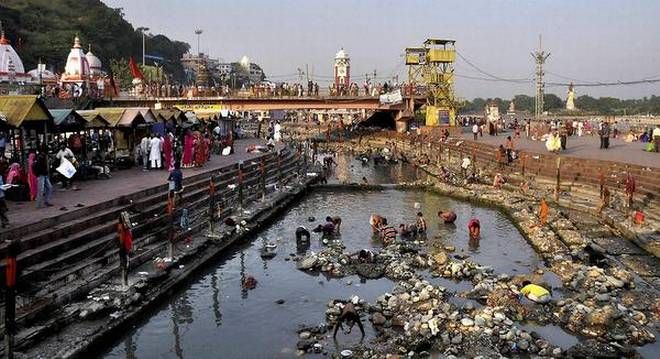SC Urges Govt. to File Status Report on Ganga Rejuvenation
Published on by Water Network Research, Official research team of The Water Network in Government
Almost two years after the Supreme Court voiced scepticism about the government’s promise to clean up the Ganga river, the apex court sought a fresh status report on what it was doing to revive the holy river.

Cleaning work of the Ganga during the 2016 Ardh Kumbh Mela in Haridwar.
The report was sought on a 32-year-old pending public interest litigation petition filed by environmental lawyer, M.C. Mehta.
In 2014, the Supreme Court voiced its scepticism about the various efforts over the decades to return the Ganga to its pristine self, once even saying that it “does not expect Ganga to be cleaned up even after 200 years.”
In a hearing on Mr. Mehta’s PIL filed in 1985, a Bench led by Chief Justice of India J.S. Khehar directed the government to file a report on the construction and functioning of sewage treatment plants alongside the river, which runs through five States. The court wants the report by Tuesday next.
In 2014, the Supreme Court said that its “last hope” rested on the National Green Tribunal (NGT) and referred the task of monitoring industrial units along the Ganga to the NGT.
The apex court had even empowered the tribunal to cut off water and power connections if the units are found to be polluting the river.
The apex court had observed that official apathy coupled with “failure at various levels” in both the State and the Central Pollution Control Board had led to the Ganga dying at the hands of “highly” and “grossly” polluting units, which flushed their untreated effluents into the river without any checks.
IITs’ consortium
In January 2015, the government had informed the Supreme Court that a consortium of IITs was preparing a road map to rejuvenate the river.
It informed that a proposal is on track to have a total of 80 sewage treatment plants (STPs) which would process, in a day, 368 million litres of water flowing into the river in the five river basin States.
In March 2015, the government submitted a detailed report prepared by the IITs for the revival of the river to its former “wholesome” self.
The Ganga River Basin Management Plan (GRBMP) 2015 drafted by the IIT consortium had pointed to several problems, from rapid urbanisation to over-grazing, which has led to the slow destruction of the river.
Source: The Hindu
Media
Taxonomy
- Water Law
- River Studies
- River Engineering
- Law
- Law & Regulations
7 Comments
-
We provide you with a description of the unique Russian technology that allows you to minimize the negative impacts of humans on the environment. In the water, such factors as the chemical absorption of oxygen, biological oxygen absorption, coloring, turbidity are greatly reduced and most importantly, the hazardous xenobiotics from the series of phenols and dioxins are eliminated. Improvement of air and water is achieved without the use of chemical, biological, radiation and medicines, the effect is achieved only by physical influence by means of electromagnetic fields of low frequency. In our work we do not use chlorine or ozone, no other chemicals. The equipment used has a certification according to Eurasian guidelines
-
as a practical i exposed my system. theories no as a practical i high light through my hand.
-
i decided recently my pointed out investigation in the issue of crises of water ,water energy, filtering issues, ten more issues and their solution exposed by me in AURANGABAD
-
i known the best ,River systems,and surface ,etc issues ,i wants exposed these solution through a debates meetings conferences ,etc and decide with Negotiation a healthy happy Atmospheric sense. o.k.
-
It has been told to Government that all River Systems and surface storages should be under a single authority fully empowered by legislation and budget and totally accountable. Allocated budgets get spent but accountability is simply not there as each agency hides behind the inefficiency of the other agencies in a multi-layered diffused accountability in governance and it is India with all its citizens that bears the brunt. Rhetoric's are plenty .Even at Varanasi, even to date, open air defecation near Assi River (a nullah) where ULB visibly discharges 50 mgd of untreated black sewage ..right into Ganges is a shame and Govt.s and its organs hide behind the dilution that happens but pathogens survive and do multiply. But it is still a call for Swatchh Bharat !
-
The success of cleaning up the Ganga river requires joint efforts of public, scientists and government!
-
my friend, all issue of crises of water and their investigation result i pointed out.but no one listen ready with me,so i decide i will arrange meetings, conferences, debates, etc on my own Home-Town .AURANGABAD,MAHARASHTRA STATE, INDIA COUNTRY. this is noted for all Global Research Center Scientist.